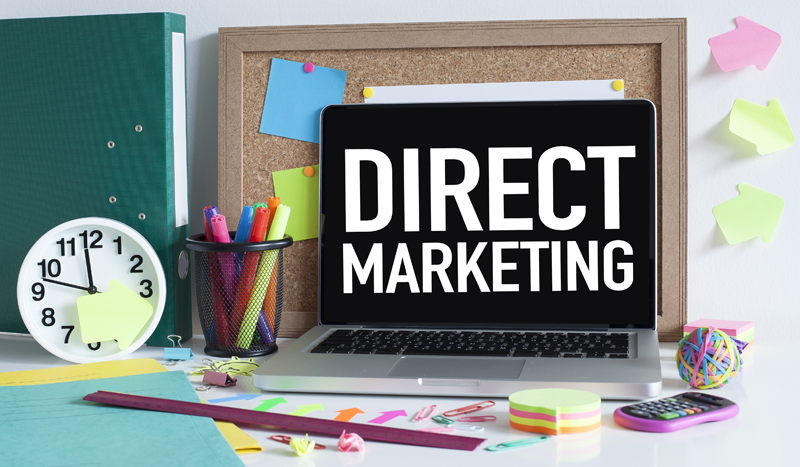Is Direct Marketing Still Effective?

There’s no doubt that online marketing has become the norm. With the sheer level of paid ads and sponsorships run through social media, the world seems to have forgotten about the value still held in offline marketing. Today, direct marketing remains an effective way to promote your brand. In this article, we explore why the old-school tactic still gets results.
What is Direct Marketing?
If you’re unsure of what direct marketing is, don’t panic! Essentially, it’s a promotional method that involves presenting information about your product or service to your customers directly, without the use of a retailer. The targeted style of marketing shows information of potential interest to customers in your target audience.
For instance, subscribers to car magazines might receive an email about new car parts, which, based on their interests, they are likely to need. Or current residents of Colchester might receive a flyer announcing the arrival of a new shop in their area. People outside of Colchester, on the other hand, would not.
Forms of Direct Marketing
Some common forms of direct marketing include:
- Catalogues
- Brochures
- Text messages
- Postcards
- Coupons
- Emails
- Flyers
- Newsletters
- Phone calls
- Leaflets
What’s the Goal?
While some marketing techniques are used to increase awareness of a company’s product or service, the aim of direct marking it to persuade the consumer to take action. While the ultimate goal is to get a sale, some customers may not feel ready to purchase on-the-spot. However, they may be open to visiting a website, calling for more information, or subscribing to an email list for later updates.
Is it Still Effective?
In a world of online advertising, direct marketing can seem like it’s been and gone. However, that couldn’t be further from the truth. Unlike mass advertising, which is shown to everyone, direct marketing is shown only to those deemed as potential customers. These people are suspected to have an interest in your company’s product or service, based on information collected about them.
For instance, Liverpool season ticket holders may be sent an email announcing a new piece of merchandise. Only Liverpool fans are likely to be interested in this, so by limiting who receives the email, the manufacturer increases the odds of reaching potential buyers. In some cases, this can also save money on distribution costs. According to recent studies, people are more likely to purchase after receiving a personalised email than they are after seeing a sponsored Instagram post.
Why Does it Still Work?
Indirect marketing is great in many ways, but direct marketing has been shown to drive better results. Below, we explore why the technique still works.
Simple
Direct marketing is effective because it’s easy to understand. One study found that it requires 21% less cognitive effort to process, meaning your customers don’t have to invest their time and energy in your mail. The success of a marketing campaign depends on how it resonates with potential customers. This is the case for both offline and online marketing. If your audience is finding your marketing hard to understand, it’s unlikely to drive results. Typically, direct marketing is simple and straight to the point. After just a few seconds of reading, your audience knows exactly what service or product you provide and how to purchase it.
Memorable
Memorable advertising campaigns are effective. Think about some of the best campaigns you’ve seen over the years. Chances are, you’ll come up with several brand names without even touching Google search. The brands you’ve got in mind have nailed their marketing and it’s had a long-lasting effect on you. Studies show that direct marketing is better at this than the indirect alternative. It’s been proven that people who spend time with physical adverts have a stronger emotional response – millennials included. In turn, this leads to better memory of the advert and a higher chance of investing later down the line.
Better Response Rate
Direct mail has a better response rate than indirect marketing. In a recent study, 4.4% of direct mail campaigns received a response, compared to just 0.12% of online adverts. For a frame of reference, if that campaign was delivered to 1000 people, 43 more people interacted with direct mail than with online marketing. If you’re spending your entire budget on email marketing, you’re missing a trick. Not only can direct mail drive better results, but it can also be more cost-effective.
Make it Personal
Unlike mass marketing, direct marketing can be personalised. You have the power to make the message personal, making the consumer feel that it’s meant solely for them. Marketing to buyers who have been identified as potential customers is more cost-effective than marketing to everybody – even with a personalised message included. As the likelihood of making a sale to your target audience is higher, personalised direct marketing has a higher return on investment. Better still, direct marketing has several ways to track the success of your ads, allowing you to perfect your campaign over time. If you notice something isn’t working, switch things up and track your progress!
In Summary
We’re not saying that direct marketing is the be-all and end-all. By all means, split your marketing budget and have your finger in several different pies. What we are saying, is that direct marketing is by no means obsolete. Essentially, it has a different purpose to indirect marketing. For some things, direct mail drives better results and is more likely to result in a sale. For others, mass marketing may be more effective. If you want to target and attract your ideal audience, direct marketing will certainly drive results.


